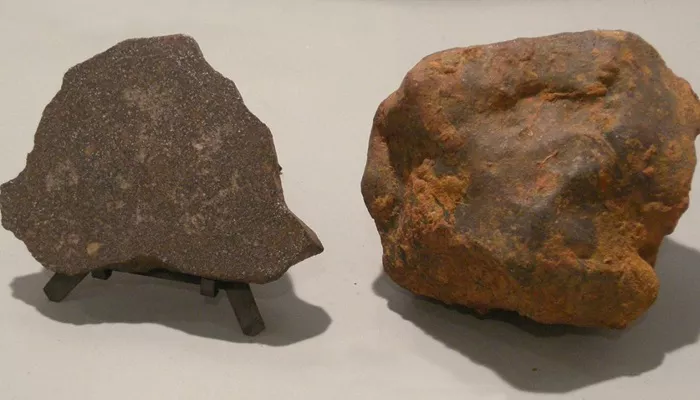Archaeologists in southern Poland have uncovered an extraordinary collection of ancient jewelry crafted from meteoritic iron, shedding new light on the metalworking skills of early civilizations. The discovery, made in Iron Age cemeteries in Częstochowa, includes 26 ornaments, some of which were made from iron that originated in space.
The findings, published in the April issue of the Journal of Archaeological Science, reveal that the ancient Lusatian culture, which thrived in what is now Poland, may have mastered metalworking earlier than previously thought. Among the artifacts are three bracelets, an ankle ring, and a pin made from meteoritic iron, while the remaining items were forged from traditional smelted iron.
Challenging Assumptions About Meteoritic Iron
The discovery challenges long-held beliefs about the role of meteoritic iron in early societies. Researchers now suggest that the material was not seen as rare or symbolic but was instead treated as a practical resource. This shift in understanding highlights the advanced technological capabilities of the Lusatian people.
The research team, composed of experts from universities and institutions in France and Poland, described the Częstochowa collection as “one of the largest assemblages of meteoritic iron artifacts ever found at a single archaeological site.” This makes the site globally significant.
A Unique Blend of Materials
The artifacts represent a rare mix of meteoritic and smelted iron, offering a unique glimpse into ancient metalworking practices. “The iron objects from the Częstochowa cemeteries form an exceptional set, as they include both meteoritic and smelted iron,” the researchers noted.
During the early Iron Age, iron was highly valued. The ability to source it from meteorites, rather than through trade, would have been particularly advantageous. “Iron from the sky likely carried symbolic significance, making it even more desirable,” the report added.
A Single Meteorite Source
Using advanced analytical techniques, the researchers determined that the meteoritic iron artifacts shared a common origin, likely from a single meteorite that fell locally. This suggests that the Lusatian people had access to a fresh source of space iron and were skilled in working with it.
The study indicates that meteoritic iron was no longer viewed as sacred or rare by this time, as it had been during the Bronze Age. Instead, it was used as a practical material. “It was simply treated as another form of iron ore,” the researchers explained.
Innovative Metalworking Techniques
The findings also suggest that the Lusatian culture may have used meteoritic iron to create distinctive visual patterns in their jewelry. This technique predates the development of Wootz steel and Damascus steel—milestones in metalworking history—by over a millennium.
A History of Meteorites in Poland
While the study points to meteorite falls in Poland during the Bronze and Iron Ages, the region has a more recent history of encounters with space rocks. In 1868, Poland witnessed the largest recorded stony meteorite shower, with approximately 70,000 fragments raining down after a massive explosion.
This latest discovery not only highlights the ingenuity of ancient civilizations but also underscores Poland’s unique connection to celestial events. The Częstochowa artifacts stand as a testament to the resourcefulness and creativity of the Lusatian people, who transformed iron from the stars into enduring works of art.
Related topics:
- Sojitz’s SJ Jewelry: Bringing Japanese Craftsmanship to the World Stage
- Emily P. Wheeler Debuts New Vintage Jewelry Collection
- Byredo Launches Its Debut Fine Jewellery Collection: Virasaat


